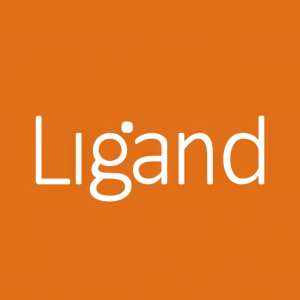Ligand and CR Double-Crane Enter Collaboration Agreement to Develop an Oral COVID-19 Therapeutic Using Ligand’s BEPro Technology™
"This transaction with CRDC is another deal in a long history of success converting our inventions, data and intellectual property into licenses to advance important medicines and deliver value to our shareholders," said
About CR Double-Crane Pharmaceutical
China Resources Double-Crane Pharmaceutical Co., Ltd. (referred to as CRDC) is a business unit of
About Ligand
Ligand is a revenue-generating biopharmaceutical company focused on developing or acquiring technologies that help pharmaceutical companies discover and develop medicines. Ligand’s business model creates value for stockholders by providing a diversified portfolio of biotech and pharmaceutical product revenue streams that are supported by an efficient and low corporate cost structure. Ligand’s goal is to offer investors an opportunity to participate in the promise of the biotech industry in a profitable, diversified and lower-risk business than a typical biotech company. Ligand’s business model is based on doing what Ligand does best: drug discovery, early-stage drug development, product reformulation and partnering. Ligand partners with other pharmaceutical companies to leverage what they do best (late-stage development, regulatory affairs and commercialization) to ultimately generate revenue. Ligand’s OmniAb® technology platform is a patent-protected technology stack used in the discovery of fully human mono- and bispecific therapeutic antibodies. The Captisol® platform technology is a patent-protected, chemically modified cyclodextrin with a structure designed to optimize the solubility and stability of drugs. Ligand’s Pelican Expression Technology™ is a robust, validated, cost-effective and scalable approach to recombinant protein production, and is especially well-suited for complex, large-scale protein production that cannot be made by traditional systems. Ligand has established multiple alliances, licenses and other business relationships with the world’s leading pharmaceutical companies including Amgen, Merck, Pfizer, Roche, Jazz Pharmaceuticals, Sanofi, Janssen, Takeda, Gilead Sciences,
Follow Ligand on Twitter @Ligand_LGND.
Forward-Looking Statements
This news release contains forward-looking statements by Ligand that involve risks and uncertainties and reflect Ligand's judgment as of the date of this release. Words such as “looks forward to,” “plans,” “believes,” “expects,” “anticipates,” “would” and “will,” and similar expressions, are intended to identify forward-looking statements. These forward-looking statements include, without limitation, statements regarding the potential benefits of the Ligand/CRDC collaboration program and the possible license agreement. Actual events or results may differ from Ligand's expectations due to risks and uncertainties including, without limitation: there can be no assurance that the CRDC program with Ligand will be able to successfully confirm, discover or develop any desirable drug candidates or that any drug candidates developed in such program would be clinically successful, would receive necessary regulatory approvals, or would be commercially successful, all of which might result in the potential license option exercise fee, milestone payments and royalties not being earned; CRDC’s drug candidates, if any, from this program might not proceed according to any intended timeline; results of any clinical study may not be timely, favorable or confirmed by later studies; effective COVID-19 vaccines and treatments may limit the market for this collaboration’s intended drug products; Ligand or CRDC may not be able to protect their intellectual property and patents covering certain products and technologies may be challenged or invalidated; Ligand is dependent on CRDC for the development and, if approved, commercialization of drug products from the collaboration; CRDC may choose not to exercise the license agreement option, or may terminate or deprioritize development or commercialization of any drug candidates or products; Ligand may not be able to successfully implement its strategic growth plan and continue the development of its proprietary programs; and ongoing or future litigation could expose Ligand to significant liabilities and have a material adverse effect on the company. The failure to meet expectations with respect to any of the foregoing matters may reduce Ligand's stock price. Additional information concerning these and other risk factors affecting Ligand can be found in prior press releases available at www.ligand.com as well as in Ligand's public periodic filings with the
View source version on businesswire.com: https://www.businesswire.com/news/home/20211021005381/en/
investors@ligand.com
(858) 550-7766
Twitter: @Ligand_LGND
LHA Investor Relations
bvoss@lhai.com
(310) 691-7100
Source:








